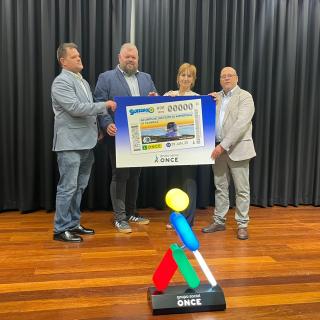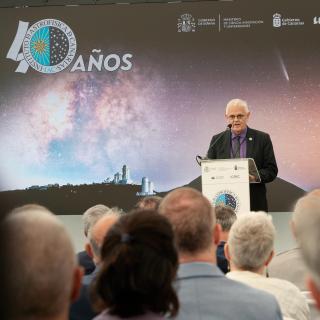The City of Valencia has been chosen to welcome the VI conference about Science with the Gran Telescopio Canarias (GTC). This telescope benefits from the exceptional conditions for astronomical observation at the Summit of the island of La Palma, as it is sited at the Roque de los Muchachos Observatory (Garafía). The aim of this meeting is so that the scientific community can get to know the latest results which have been obtained using data from its observations. At the meeting they will also learn about GTC operations, and the instruments which are being proposed for the coming years, as well as stimulating current collaborations, and promoting new sinergies among the different communities which work with this telescope.
Francisco Sánchez, founding director of the Instituto de Astrofísica de Canarias (IAC) and Romano Corradi, director of the GTC will be the inaugurators of this meeting, with two lectures in which they will talk respectively about the birth and the first years of the telescope, and about its present and future. After that for two and a half days there will be oral presentations and scientific posters.
These sessions will cover the most recent researches with the telescope, such as the study of objects like the black hole in the V404 Cygni system, catalogues such as those of active asteroids, and such as the production of a map of the magnetic field at the centre of the galaxy and the GTC data archive, which will be usable with the tools of the virtual observatory.
The meeting will be completed with half a day devoted to parallel sessions for group meetings. In addition Rafael Rebolo, current Director of the IAC, recently awarded the National Prize for research in Physical Science, Materials Science, and Earth Science, will give, on Thursdya 13th at 19.10 a public lectura with the title “From the Big Bang to exoplanets. Discover the universe with the telescopes of the future.
The Gran Telescopio Canarias, whose primary mirror comprises a mosaic of 32 ceramic hexagonal mirrors, each of 1.9m from tip to tip, has the collecting capacity equivalent to that of a monolithic mirror of diameter 10.4m which makes it the larges optical and infrared telescope in the world. However the success of a telescope depends on its suite of instruments. Those used on the GTC are: OSIRIS, EMIR, MEGARA, MIRADAS, FRIDA, HiPERCAM, CIRCE, NEFER and HORS. That is why talks about their capacities, and recent work carried out with them take an important role in the meeting.
The Gran Telescopio Canarias is funded by the Autonomous Community of the Canaries and by the Spanish State (cofinanced with FEDER funds, Europeaj Funds for Regional Development) with international participation by institutions in Mexico ,IA-UNAM, (the Institute of Astronomy of the National Autonomous University of Mexico), INAOE, (the National Institute of Astrophysics , Optics and Electronics) both cofinanced by the CONACYT (National Council for Science and Technology of Mexico), and the United States (Foundation for Research of the University of Florida).



